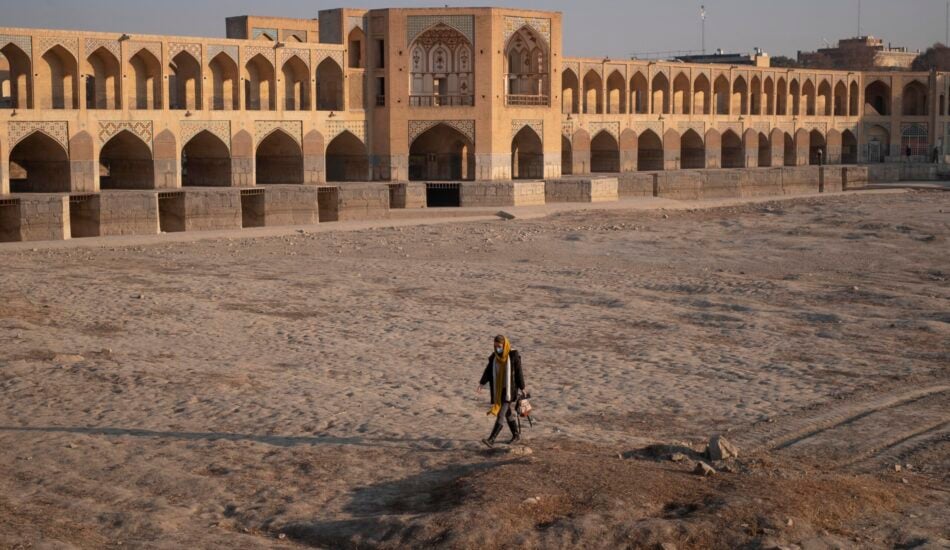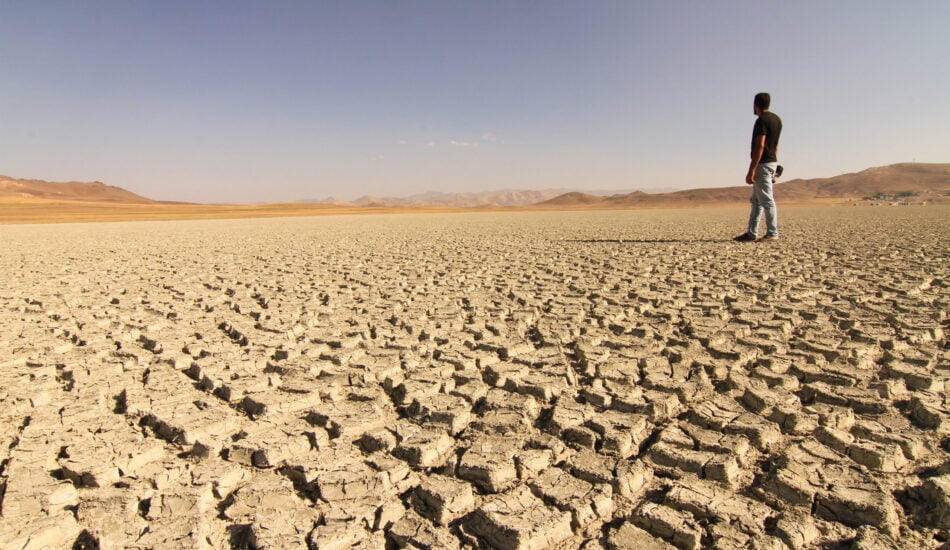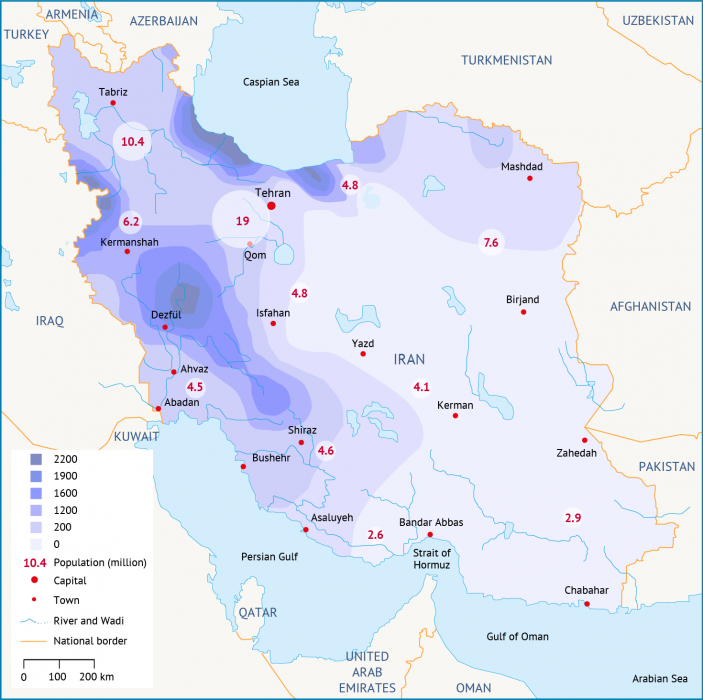
We are experiencing another ‘Summer of Drought’. All over the world countries are reporting new drought records and water scarcity issues. Think of Italy, which is facing the worst drought in 70 years and declared a state of emergency in its northern regions. Or consider the footage of countless dried-up rivers elsewhere in Europe. For Europeans, droughts and water scarcity seem to be a relatively new phenomenon, with which they have yet to learn to deal with. For most countries in MENA-region however, this phenomenon is all too familiar.
Turkey and Iran are two MENA-countries that are not new to droughts and water shortages. What is causing the increase in drought and water scarcity in both countries? We could point at climate change as a main cause, due to higher temperatures and reduced rainfall. However, do water management, policies and human behaviour not play a bigger role? Based on the water reports of both countries, we will review some external, as well as internal causes of their droughts and water scarcity. Also, we will look at some of the possible solutions that are recommended for both countries, as well as successful policies that are already implemented. The case studies of Iran and Turkey can highlight examples of what (not) to do when it comes to droughts and water shortages elsewhere in the world.
Drought and water scarcity in Turkey and Iran
In 2014, Turkey endured the driest year since 1961.[1] The drought posed challenges for the country’s water supply, particularly in metropolitan areas, and directly affected the agricultural sector. It is worrying that the meteorological drought in Turkey might lead to hydrological drought and will continue to affect water resources in the coming years.
Iran is facing unprecedented challenges in securing water and food for its growing population, which is projected to reach 92 million by 2050. These challenges are due not only to Iran’s semi-arid climate and declining precipitation over the past decade, but also to inefficient management of water resources. If the present trend continues, the current water scarcity will become a crisis. In fact, the Iranian region Khuzestan is already showing the grim prospect of a life of permanent drought and water scarcity.
Climate change: less rainfall and more droughts
In Iran and Turkey, climate change is reducing precipitation and increasing droughts. In the last 50 years, Iran has faced severe and prolonged droughts, which have significantly threatened water availability in all sectors. It is expected that climate change will further increase the risk of droughts in some parts of the country and cause floods in others. Iran is located in the world’s dry belt, with annual precipitation of 228mm in 2017.[2] This value has been the average since 1994, being 6% less than the long term average, which is 242 mm/year. The distribution of the precipitation is uneven across the country. The least precipitation falls in the most densely populated areas (Map 1).
In Turkey, water resources are the first to suffer from climate change. It is expected that the temperature will rise by 2.5-3.5 degrees Celsius and precipitation will decrease at a rate of 25-35% across Turkey before 2100.[3] This change will probably also have a negative impact on Turkey’s water budget and increase the country’s water stress.
Human-induced scarcity: groundwater depletion
In Iran, since the 1980s the government’s policy has been to become self-sufficient in wheat production. Although this policy brought greater political stability, it had an irreversible impact on the sustainability of the country’s renewable water resources that persist to this day. The country’s groundwater levels are dropping at an average of 2-4 metres per year, since the slow-filling aquifers have not been able to keep up with the growing number of water users and withdrawals. Despite several measures by the government, the agricultural sector remains to use increasing groundwater, which leaves the feasibility of these restrictions uncertain. [4] [5] Most of the overexploitation occurs in the central basins where less surface water is available.
Uncontrolled use of groundwater resources in Turkey’s regions with insufficient surface water (rivers and lakes) represents a challenge for the country. Despite the legal regulations on wells, the use of illegal wells for groundwater extraction is unlikely to stop unless sanctions and inspections improve. Groundwater resources are subject to intense use for agricultural purposes. Because of overextraction, most of the groundwater resources are threatened with extinction.

Solutions and recommendations
What could Turkey and Iran do to reduce their water use and avoid increased water stress or even a water crisis? We highlighted several measures from the water reports of both countries.
New techniques and incentives for farmers
Groundwater is mainly used in agricultural irrigation in Turkey. Water-saving techniques such as sprinkle and drip irrigation should be encouraged to increase efficiency. Water losses are far higher in conventional surface irrigation. In recent years, farmers have been given various incentives and means to adopt water-saving irrigation techniques. This is a major step, however the effective implementation of such techniques also requires monitoring and evaluation.
In Iran, economic incentives, such as low-interest loans, are being provided to farmers to install modern irrigation systems, like drip irrigation or sprinkle irrigation, which have better water-use efficiency. New agricultural practices that consume much less water, such as hydroponics, are also being used for large-scale greenhouse production in some cities, including Tehran, Hashtgerd, Karaj and Kish Island.
Water efficiency in urban areas
In Turkey, some 50% of water in municipal water systems is lost when conveying water from resource to households. Old and damaged water mains should be repaired or replaced to minimize this loss. With drought putting additional pressure on rising urban water needs, the problem of meeting the water demand could become critical.
In Iran, reducing the water demand in urban areas requires a more consolidated effort to repair leakage and seepage along conveyance lines, standardize water taps, separate drinking water from non-drinking water uses, and collect run-off using urban water harvesting techniques. During the drought of 2001-2004, the government adopted a new pricing model that incorporated a consumption ceiling. Any consumption above this ceiling resulted in escalating fees per volume of additional consumption. This model is still in place. During the same drought period, rationing of drinking water and restricted supply were introduced in all major cities, including the capital Tehran.
Awareness and education
Raising awareness of Turkey’s limited water resources and encouraging each person and household to play their part in saving water is key to securing Turkey’s water future. Demand-oriented rather than supply-oriented management should be the focus. Demand-oriented management ensures the efficient use of water resources by limiting demand and introducing institutional, economic and administrative incentives to save water. Raising awareness can be achieved through knowledge sharing and educational projects carried out by private or governmental organizations, the media and schools.
The Iranian government has attached high importance to demand management. Nationwide programs are being implemented to raise public awareness about the growing water scarcity and to engage the public in water-saving measures. These programs include capacity building through mass media (state TV and radio), training initiatives in schools, installing public boards in cities and metro lines in cooperation with municipalities, developing mobile applications, frequent interviews with water officials and educating journalists on the new concept of water journalism.
Read the full water reports of Turkey and Iran for a more elaborate analysis of the causes of their droughts and water shortages, as well as possible solutions. We also recommend reading our publications on the Zayandehroud river and Water Scarcity in Khuzestan.
• Turkey Water Report
• Iran Water Report
• Zayandehroud River
• Water scarcity in Khuzestan
[1] No: 228, 4 July 2014, Press Release Regarding the Amount of Water That Turkey Releases from the Euphrates River.
[2] FAO, 2017. AQUASTAT Database. AQUASTAT Website. Available at http://www.fao.org/aquastat/statistics/query/index.html
[3] Intergovernmental Panel on Climate Change,2008, Climate Change 2007 Synthesis Repor, Sweden, p. 46-47
[4] Moridi, A., 2017. State of water resources in Iran. International Journal of Hydrology. Available at https://water.fanack.com/
[5] Zekri, S. ed., 2020. Water Policies in MENA Countries (Vol. 23). Springer Nature. Available at https://doi.org/10.1007/978-3-030-29274-4


